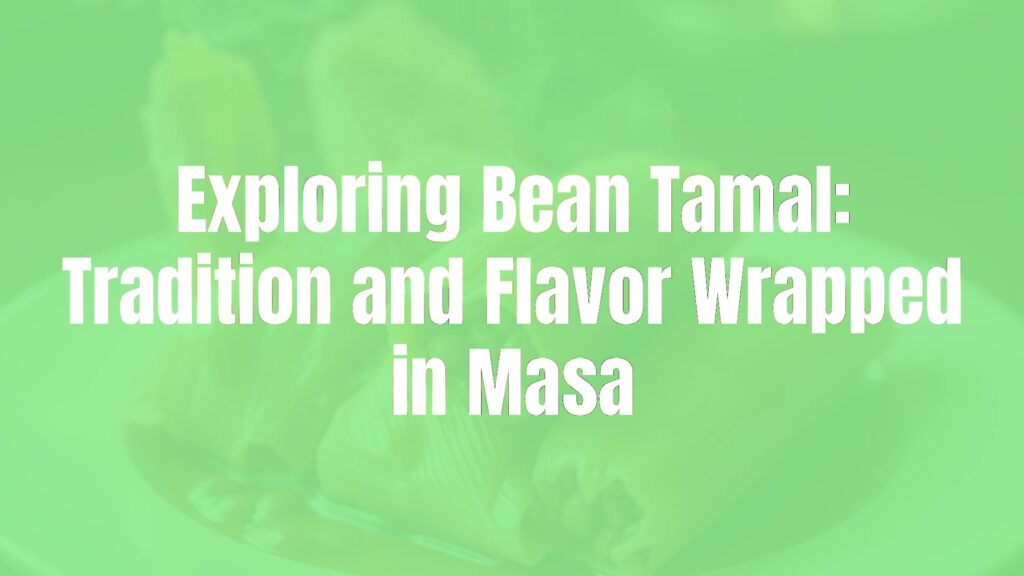Introduction to Bean Tamal
The bean tamal is a cherished variation of the classic tamal, known for its humble yet robust use of beans as the central filling. Favored throughout Mexico and many parts of Central America, this tamal stands out not only for its vegetarian-friendly profile but also for the versatility and comfort it offers. Its gentle flavor and soft texture make it a staple on family tables and festive occasions alike.
Defining Characteristics
What sets bean tamales apart is their simple yet satisfying composition. Encased in a slightly sweet or savory masa dough, the core is typically a smooth or chunky filling made from cooked beans—most commonly black beans or pinto beans. Wrapped and steamed in corn husks (hojas de maíz), the final product bears a tender, moist masa exterior enveloping a rich, earthy bean center. Sometimes, the filling is enhanced with spices, herbs, or even bits of cheese or chili for extra depth.
Historical and Cultural Context
Bean tamales have deep roots in the culinary history of Mesoamerica. Beans and masa (corn dough) have formed the foundation of indigenous diets for centuries, making bean tamales a symbol of sustenance and cultural identity. Traditionally, these tamales have been prepared during religious festivals, community gatherings, and as economical everyday meals. Their prevalence in regions such as Oaxaca, Veracruz, and Guatemala attests to their adaptability and significance across various culinary landscapes.
Essential Ingredients
The core ingredients for a bean tamal are straightforward but fundamental to its flavor:
- Masa (corn dough): Often prepared with masa harina, water or broth, and sometimes lard or vegetable shortening for richness.
- Beans: Cooked black beans, pinto beans, or other locally available varieties. These can be mashed, whole, or refried as desired.
- Corn husks: Used to wrap and shape the tamales before steaming.
Common additions include herbs such as epazote, bits of cheese, or spicy ingredients like jalapeños or guajillo chili to enhance the core bean filling.
Regional Variations
The bean tamal displays notable regional diversity across Latin America. In Oaxaca, the filling might feature black beans blended with hoja santa for an aromatic note. In Guatemala, tamales de frijol sometimes contain a bit of salsa or mole to complement the beans. Urban Mexican regions might add a layer of cheese or salsa verde alongside the beans for added flavor and creaminess.
Substitutions and Adaptations
Bean tamales are highly adaptable to dietary needs. Vegetable shortening can easily replace lard for a vegan or vegetarian version. Any bean variety—such as kidney or navy beans—can stand in for traditional black or pinto beans, allowing cooks to personalize the filling to their tastes. Some contemporary takes even include additions like roasted vegetables or plant-based cheeses for modern flair.
Serving Suggestions and Pairings
Bean tamales are traditionally enjoyed warm, fresh from the steamer, often accompanied by simple garnishes such as crema, salsa roja, salsa verde, or pickled jalapeños. They pair beautifully with sides like Mexican rice, refried beans, or a crisp vegetable slaw. Popular drink pairings include atole, champurrado (a thick chocolate-based drink), or a light agua fresca for a complete and comforting meal experience.
Conclusion
The bean tamal’s enduring appeal lies in its simplicity, adaptability, and deep connection to the culinary heritage of the Americas. Whether enjoyed as a meatless main or a satisfying snack, it continues to inspire both tradition and innovation on dining tables everywhere.

